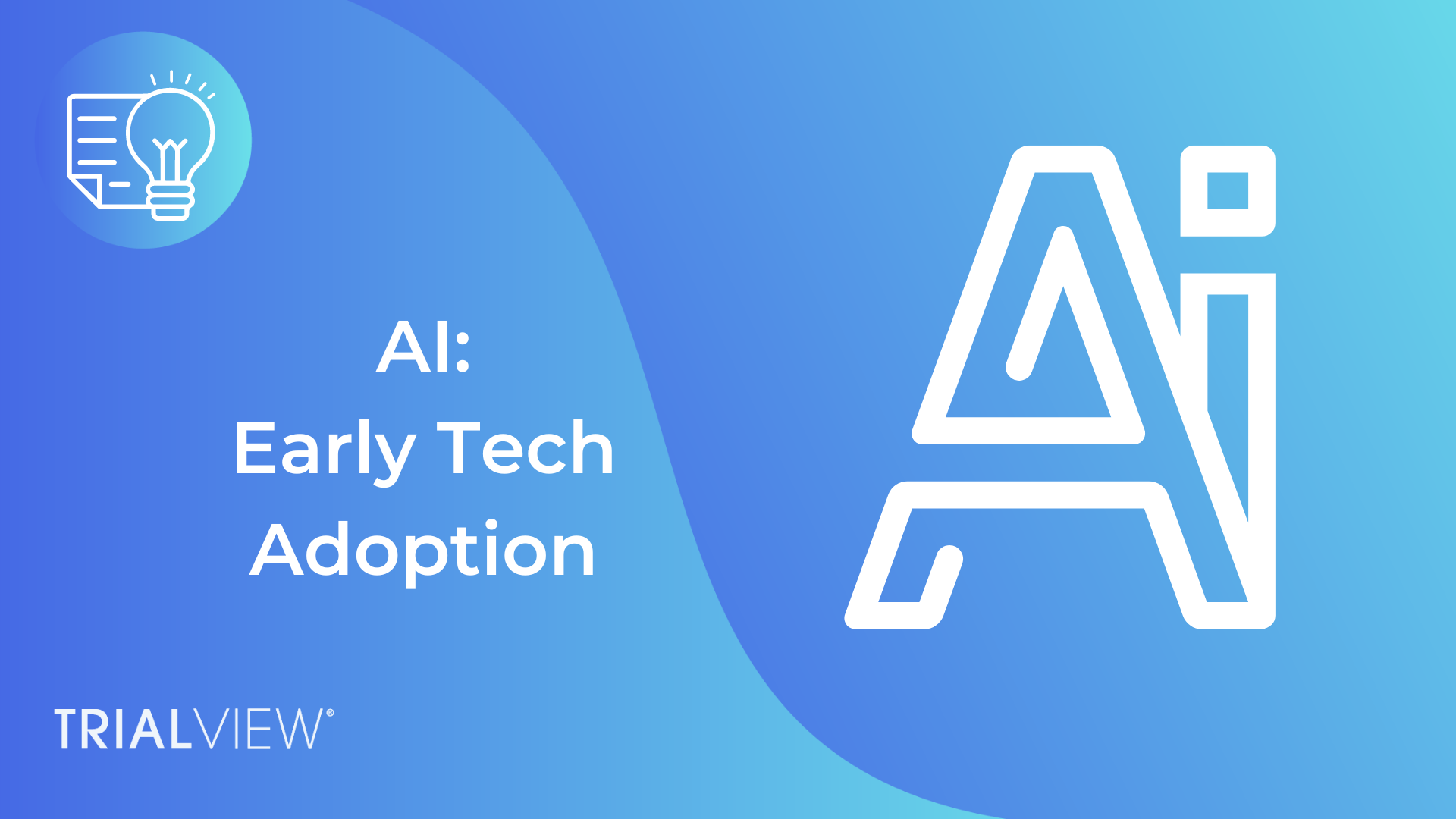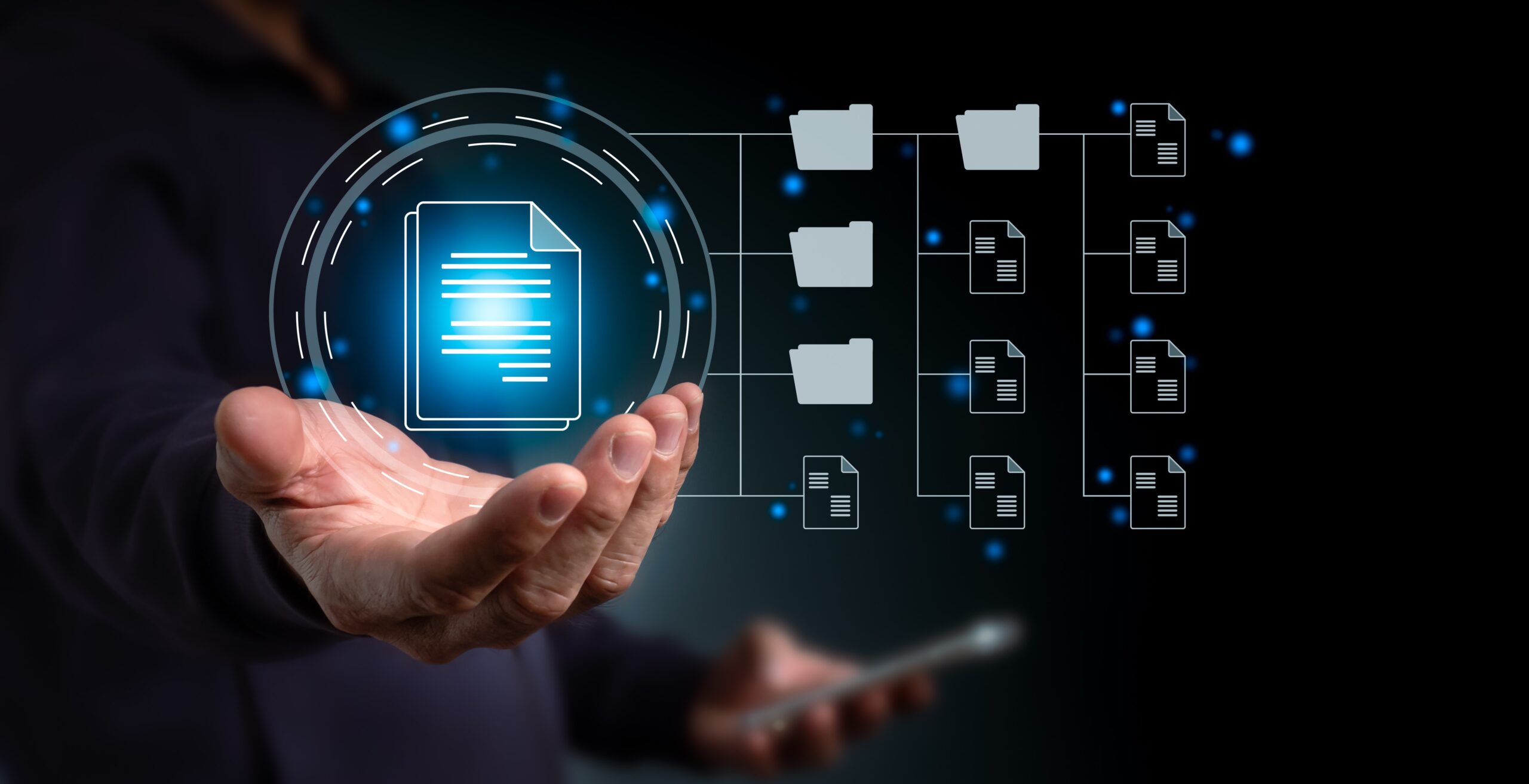AI & Early Tech Adoption
The strategic implications of using tech at an earlier stage in the litigation lifecycle is really starting to land with legal teams.
Date : 07/03/24


Using tech and AI legal tools early in the litigation lifecycle is really starting to land with legal teams. We investigate the reasons behind this trend.
As the use of tech and AI in litigation becomes increasingly common, there is no denying the numerous benefits it brings with it.
The strategic implications of using tech at an earlier stage in the litigation lifecycle is starting to land with legal teams. We explore the reasons behind this trend; as you may have already guessed, AI may just be the catalyst.
Plus, with huge amounts of digital data to navigate, we also ask whether practitioners will actually have a choice in the future.
4 Strategic Benefits of AI Legal Tools and Early Tech Adoption
1. AI-Powered Semantic Search
The traditional challenges of sifting through vast amounts of legal documents to find relevant information are significantly alleviated by AI-driven semantic search.
With platforms like TrialView, the capacity to understand context, meaning, and relationships between words, pinpointing critical details efficiently takes seconds.
From pleadings to evidence, AI-enhanced semantic search transforms the way we manage information, ensuring not only speed but also a higher level of precision in document retrieval.
2. Seamless Collaboration
Collaboration lies at the heart of dispute management, and AI amplifies this aspect in the realm of electronic bundling.
Cloud-based solutions, like TrialView, when infused with AI capabilities, facilitate seamless collaboration among legal teams. Multiple professionals can work simultaneously on shared documents, with AI algorithms suggesting improvements and ensuring consistency.
The result is a more cohesive workflow, breaking down silos and enhancing the collective intelligence of the legal team.
3. Persuasion
Flowing through from early case management to the courtroom, AI legal tools offer a real opportunity to enhance the overall impact during a hearing.
The art of persuasion meets the precision of data, which can be interrogated and presented in an effective and visual way to the court or tribunal.
4. Cost Efficiency
The integration of AI, used at a much earlier stage, has the potential to significantly reduce costs. Aside from the evident saving on printing, AI mitigates hours spent on the mundane, from disclosure through to bundling.
Moreover, AI pervades the entire data set, opening up the potential to find and track patterns throughout the data.
The Future
The early adoption of platforms, like TrialView, enhanced by AI’s capabilities in semantic search and timeline creation, is not just a tech trend, but represents a fundamental shift in the way legal professionals approach disputes.
The use of AI in litigation is becoming inevitable. Ultimately, it’s an investment in efficiency, collaboration, and strategic case management — a commitment to staying at the forefront of a shifting disputes landscape.
As such, the choice as to whether to engage with the use of AI and tech is declining. Arguably, it’s only a matter of time before the use of AI in litigation will be necessary to comply with court guidelines.
Learn More About AI in Litigation
AI tools such as TrialView can help to enhance collaboration, compliance, and the overall strategic approach to litigation, allowing legal professionals to work with increased speed and efficiency.
If you’d like to learn more about the use of AI in litigation and discover how AI tools such as TrialView can help you to work smarter, not harder, book a tailored demo to find out more about the strategic benefits for yourself.
Alternatively, contact our team for further information.
Related Blogs


BBPC – The use of AI in commercial dispute resolution
TrialView were delighted to sponsor the BBPC Forum. The Master of the Rolls, Sir Geoffrey Vos, and an expert panel discussed how AI is being used in dispute resolution today and how this may look in the future.
- Written By : Eimear Mccann
- Date : 02/08/24


Timeline Creation: TrialView Perspective
With our AI functionality, we balance innovation with practical tools to help make your case preparation easier. One of our newest evolutions is Timeline Creation functionality.
- Written By : Eimear Mccann
- Date : 19/07/24
Take The Next Step.
If you’re wondering about how we can help you focus more on outcomes, and worry less about hearing prep, book a tailored demo or give us a call.


Get In Contact
Want to find out more? Get in touch to find out why TrialView is the platform of choice for dispute resolution.

